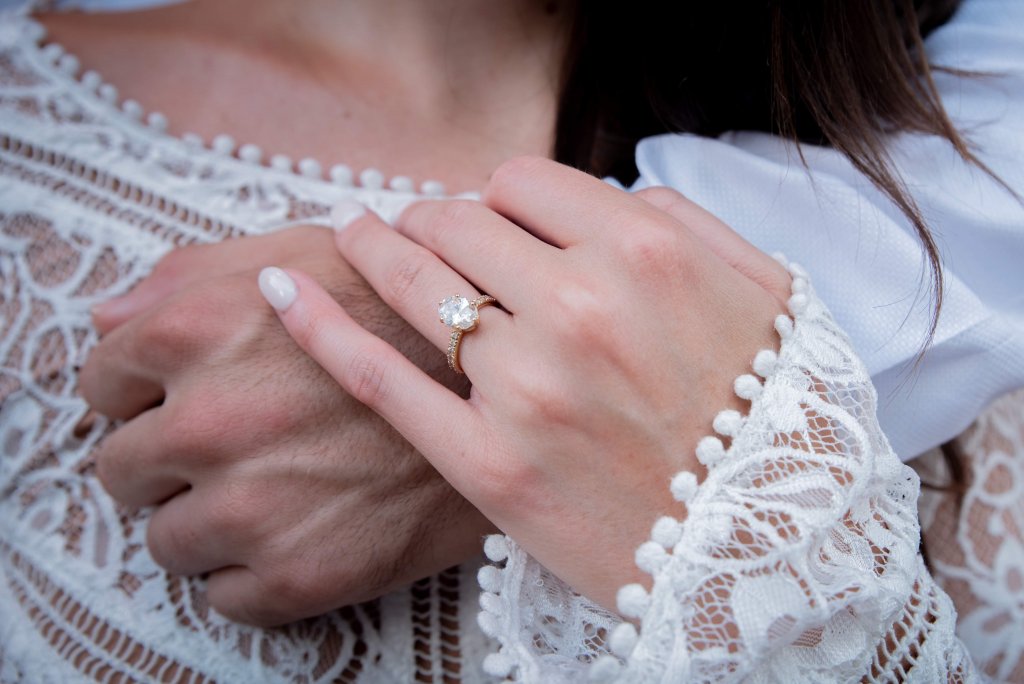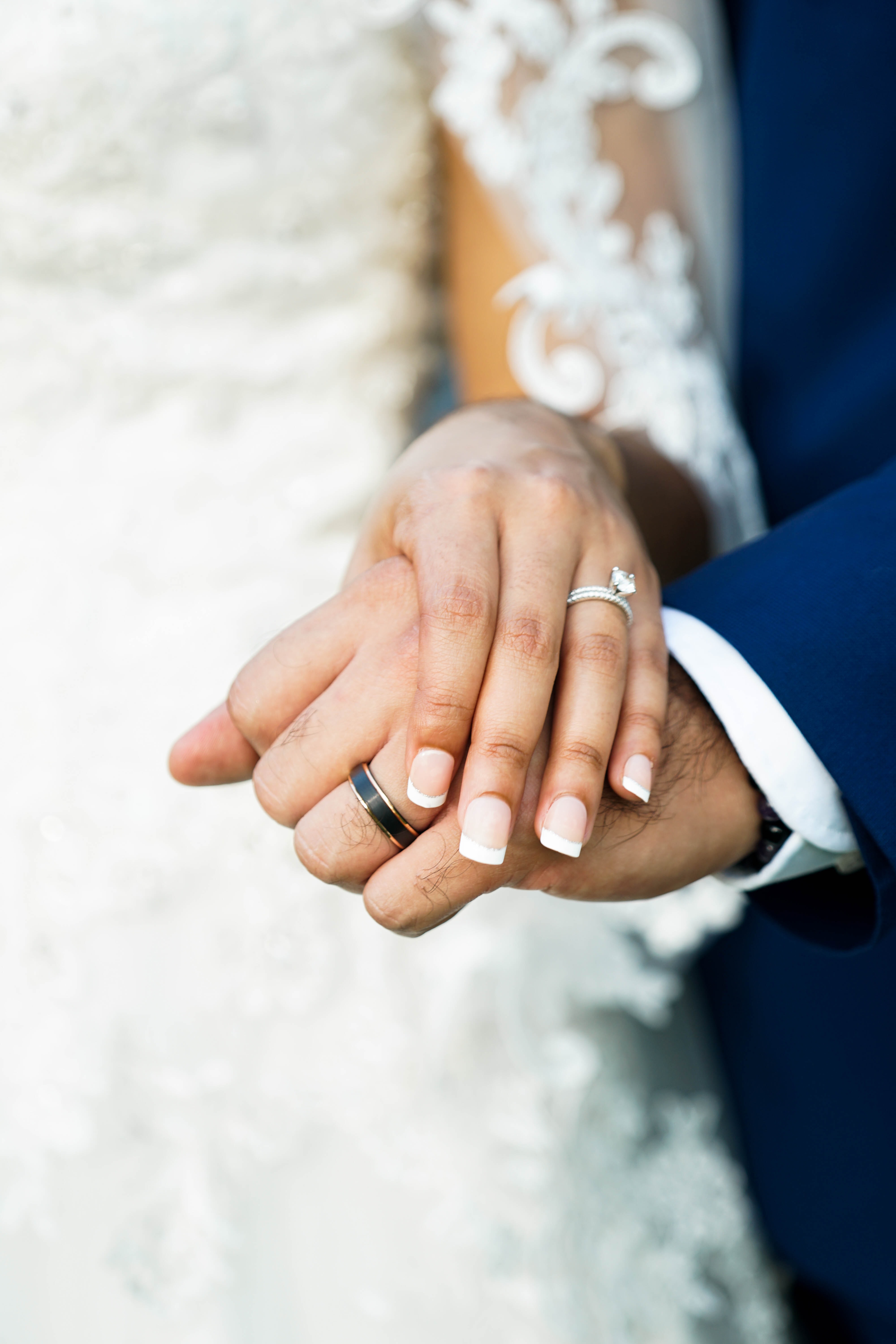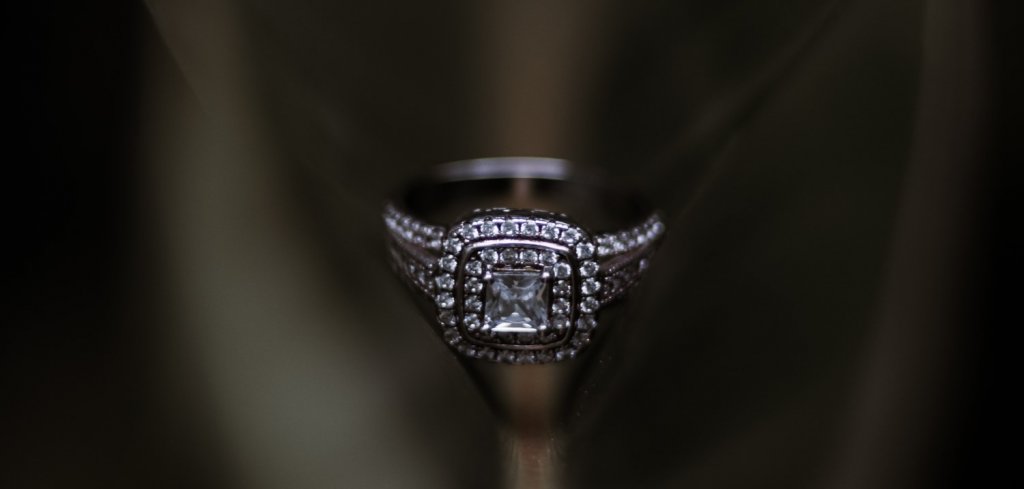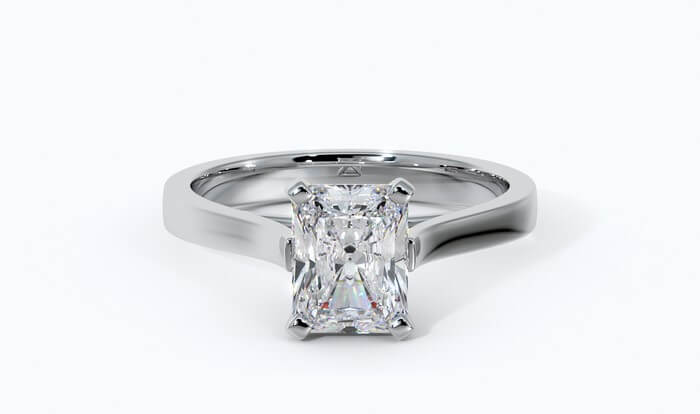A Beginner’s Guide to Micro Pavé Settings
Key Takeaways
- The micro pavé setting does exactly as it says on the tin. Small and subtle but still durable, this setting proves that going small on size does not necessarily mean you are going small on beauty.
- The micro pavé setting comprises a number of melee diamonds, designed to glisten and sparkle whichever way your ring hits the light.
- While the diamond at the center of the ring is arguably the most important, going for a micro pavé setting can magnify its impact. It’s certainly a good option if you want to create a feature of the ring’s shank, as well as the center setting.
- Talk to the jeweler, compare the look of the pavé with the micro pavé setting, and then go from there.

Whoever first coined the phrase ‘it’s the small things that count’ probably wasn’t thinking about engagement rings. At the beginning of your search, it’s only natural that you’re squarely focused on finding that perfect diamond – and, of course, that you quickly become used to the idea that every tenth of a carat counts.
After all, we all want that center diamond to draw attention from across crowded rooms – to light up with brilliance and fire the moment the ring box is opened, and you finally pop the question to her.
Still, when it comes to making an impact, the ‘small things’ really do play a decisive role, and nothing offers a better example of this fact than the micro-pavé setting.
Minute, but nonetheless transformative for your engagement ring setting, this represents one of the most popular options among fiancés-to-be today.
What Is a Micro Pavé Diamond?
This refers to a very small diamond, typically below 0.01 carats, used to create a micro pavé setting.
Like the pavé set engagement rings, the micro pavé adds a number of very small, real diamonds along the shank (band) of the ring, to create extra sparkle on either side of the center diamond, or simply as decoration for a wedding band or eternity ring.
These diamonds tend to be known by the name ‘melee diamonds’, or simply ‘smalls’.
They can be placed all the way around, on the shoulders of the ring, or on a split shank to create some difference between the two halves. The micro pavé is also small enough to be used on either side of a knife-edge shank, creating a multidimensional sparkle that, in spite of its small size, will sparkle bright enough to steal the attention of people standing across the room.
How are Melee Diamonds Made?
During the cutting process, much of the rough diamond has to be removed in order to create the perfectly symmetrical and proportioned diamonds we prize today. These off-cuts can be shaped into melee diamonds, and sold in large quantities to jewelers.
So, for every diamond being cut right now, there are many melee diamonds waiting to be collected and shaped. It’s a great way of ensuring no piece of diamond goes to waste – and that, all around the world, there are many brides wearing a small piece of the same diamond.
These days, almost all melee diamonds are cut into a shape known as the ‘full cut’, which holds 75 facets – just like the larger round cut diamond – which enable it to generate an incredible amount of scintillating fire and brilliance, even in spite of its small size.
Once cut, these melee diamonds are sorted by size, and those of the same carat weight are combined together in large parcels and sold in bulk to jewelers.
Does the GIA Grade Melee Diamonds?
Yes, but it is not common practice. This is why it is very important to work with a reputable jeweler, who will not overcharge on poor quality or imitation diamonds.
While the GIA Melee Analysis Service is available, the sheer volume of melee diamonds created, cut, and sold around the world make this practice considerably less common than it is to have a full-size center stone graded and certified by the Gemological Institute of America.
But, while you won’t need a GIA certificate for each one, you will want to make sure that each melee diamond used in your micro pavé setting appears the same color, eye clean, well cut and, of course, the same size. When you’re talking about detailing this intricate, any minor differences will look glaringly obvious in the finished article.
An experienced jeweler will only source their melee diamonds from reputable sellers, and will be capable of checking each one carefully before using it within a pavé or micro pavé setting. Our Jewelry Store Locator will connect you with verified jewelers in your area, who will be more than capable of guiding you through this part of the process – and any other.

What is the Difference Between Pavé And Micro Pavé?
Size. In terms of the diamonds used, the settings that hold them in place, and the size of the ring’s shank, everything about the micro pavé is smaller than the pavé.
Anyone new to the world of engagement rings will probably be pretty surprised to find out quite how small a diamond can be. We’re used to homing in on that center stone, even before we start browsing for ourselves, but even the smallest diamond is capable of emitting an incredible sparkle capable of bringing any diamond ring to the next level.
The general rule behind pavé and micro pavé diamond rings is the same: line the shank, or half the shank, with these tiny diamonds, held in place by prongs or delicate metal beads. A jeweler working on a micro-pavé ring, however, will have to practice even greater delicacy and sleight of hand to pull it off beautifully, and securely. This means that, unless you’re looking at a micro pavé band up close, your eyes probably won’t be able to pick up on the metalwork holding those tiny diamonds in place.
Micro pavé is an increasingly popular choice because of its ability to be used on skinny band engagement rings. This style has found prominence on the fingers of notable celebrities like Reese Witherspoon and Ann Hathaway, as well as Beyoncé Knowles.
Is Micro Pavé More Expensive?
In general, no. The micro pavé setting is a little more budget-friendly, as it uses smaller diamonds that would otherwise have little use to jewelers.
It goes without saying that choosing to incorporate a micro pavé setting into the design of your engagement ring will bump up the overall price, but the total carat weight of your completed ring will be lower if you choose a micro-pavé setting over a pavé setting.
Is Micro Pavé Durable?
Yes, a well-made micro pavé setting will keep those melee diamonds in their place for many years, with proper care.
Just because these diamonds are so much smaller than others, does not mean that they will be any less secure in their setting.
Good jewelers have long since perfected the art of securing melee diamonds in place without covering them in bulky metalwork, which is why it’s so important that you find a local jeweler with a strong reputation in crafting engagement rings that are as elegant as they are durable.
You’ll also need to get used to the idea that the micro pavé is specifically designed to create the impression that these diamonds are somehow floating on the ring. Exposing as much of the diamond to the light as possible is what creates that incredibly glitter that continuously glints over the shank.
Are Micro Pavé Diamonds Good?
Absolutely. Micro pavé can prove transformative for even the simplest ring design, and is subtle enough to add a little something extra without overwhelming the center setting with sparkle.
They can also be used as much or as little as you would like, whether you want to encrust the band with a vibrant sparkle or simply add a small, delicate twinkle on the shank’s edge. For that reason, they prove popular with shoppers of all different tastes and styles; they can complement the most ornate designs and the most basic.
There are two things you should always keep in mind when considering a micro pavé setting, however.
First of all, how skilled is the jeweler fitting it? If you’re working with a WillYou.Net jeweler, then this won’t be a concern. If, on the other hand, you’re working with an online retailer and have only a handful of pictures to go off before you invest your money, it should be cause for concern. While the micro pavé diamonds are only small, the gap created by one that has worked loose will be glaringly obvious, so don’t risk your diamond ring on an unknown factor.
Secondly, how trustworthy is the jeweler fitting it? As we mentioned above, it’s all too easy for low quality or imitation melee diamonds to be mixed in with real ones, and that’ll mean you end up missing out on the incredible sparkle offered by these stones – and that your money will go to waste.
If you can put a big check next to both of those questions then, absolutely – micro pavé diamonds are going to be an excellent choice for your diamond ring.
How to You Clean a Micro Pavé Ring?
The phrase ‘little and often’ is very apt here. A regular soak is preferable to a more intensive cleaning process, and will keep any product from building up between these tiny stones.
It’s a fact of life that many of our daily habits aren’t necessarily ‘ideal’ for our rings – but it’s also true that gold, platinum, and diamond are among some of the most resilient natural substances out there. Soaking your ring in a light detergent and plenty of warm water regularly will remove any build-up of hand sanitizer, moisturizer, makeup, and perfume so that the jeweler doesn’t have to go in with their specialized tools to pick it out.
You will still want to get it checked once a year with your jeweler, regardless of how often you clean it.
So, Should You Pick Micro Pavé?
It’s a strong contender. Micro pavé is pretty unique in its ability to subtly complement a low-key, minimalism-inspired engagement ring, as well as bringing a more elaborate piece to life with its incredible light performance.
If you love the pavé setting, but want to make those metal settings a little less obvious, then the micro pavé could be a great one to choose. Ask your jeweler to show you these two similar styles side by side, so you can make an informed decision based off the unique ways they behave under the light.

Mar 26, 2022 By Willyou.net
Wide Band Engagement Rings: The Complete Guide

Mar 17, 2022 By Willyou.net
What is an Elongated Cushion Cut Diamond? Everything You Need to Know








